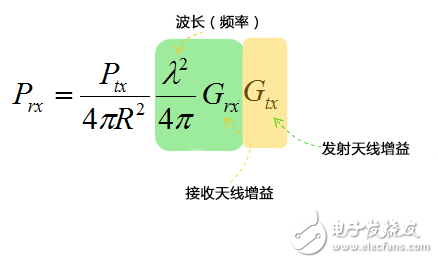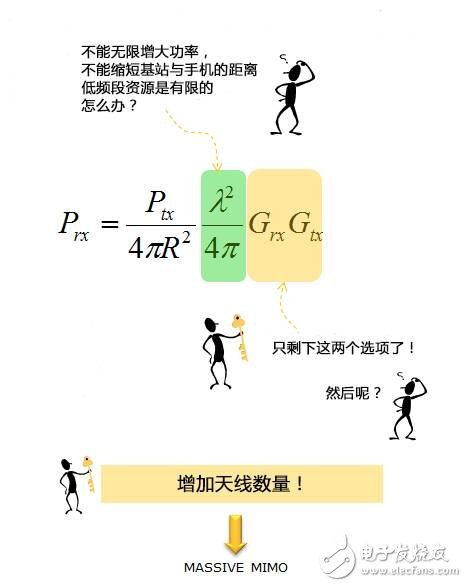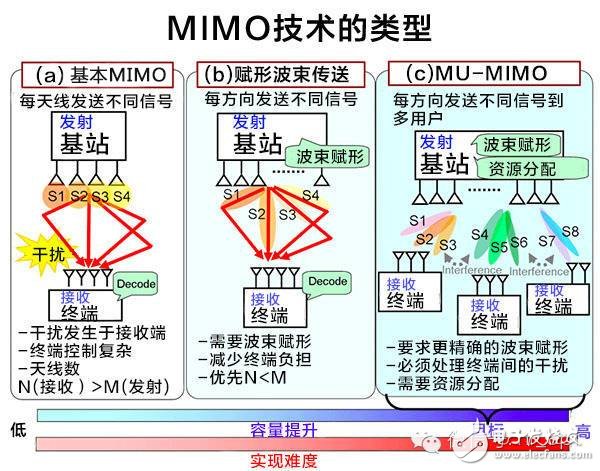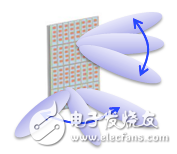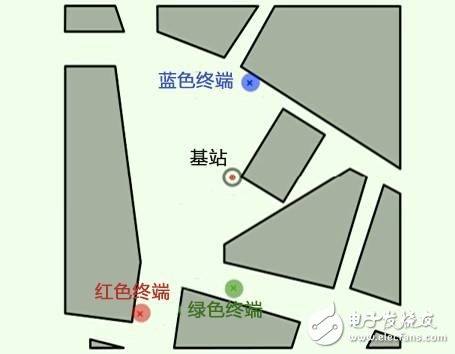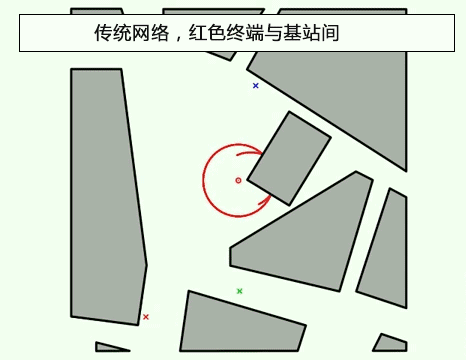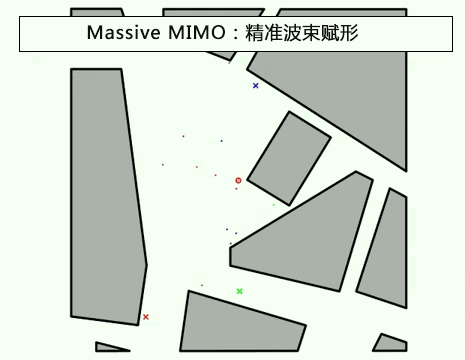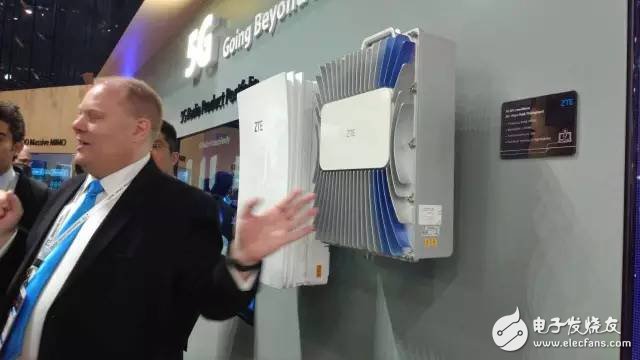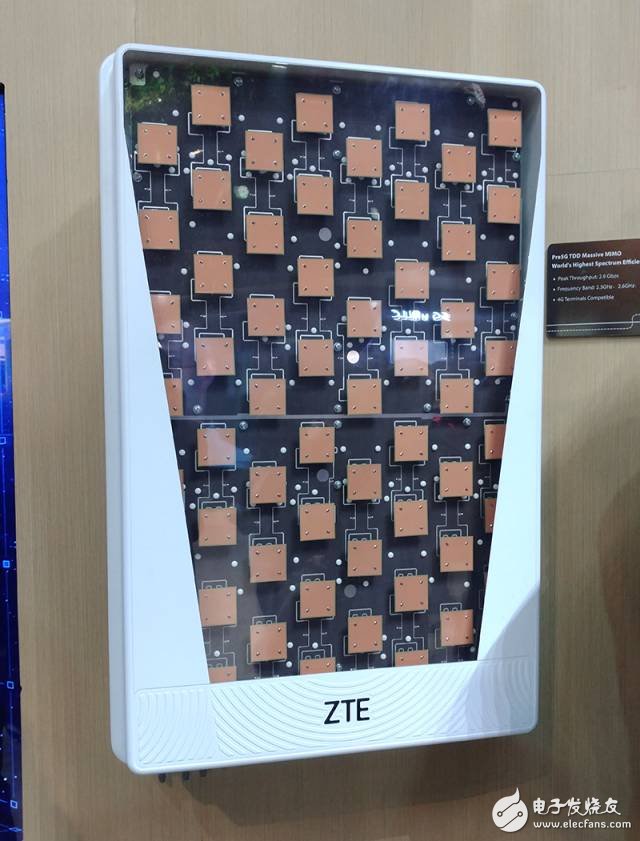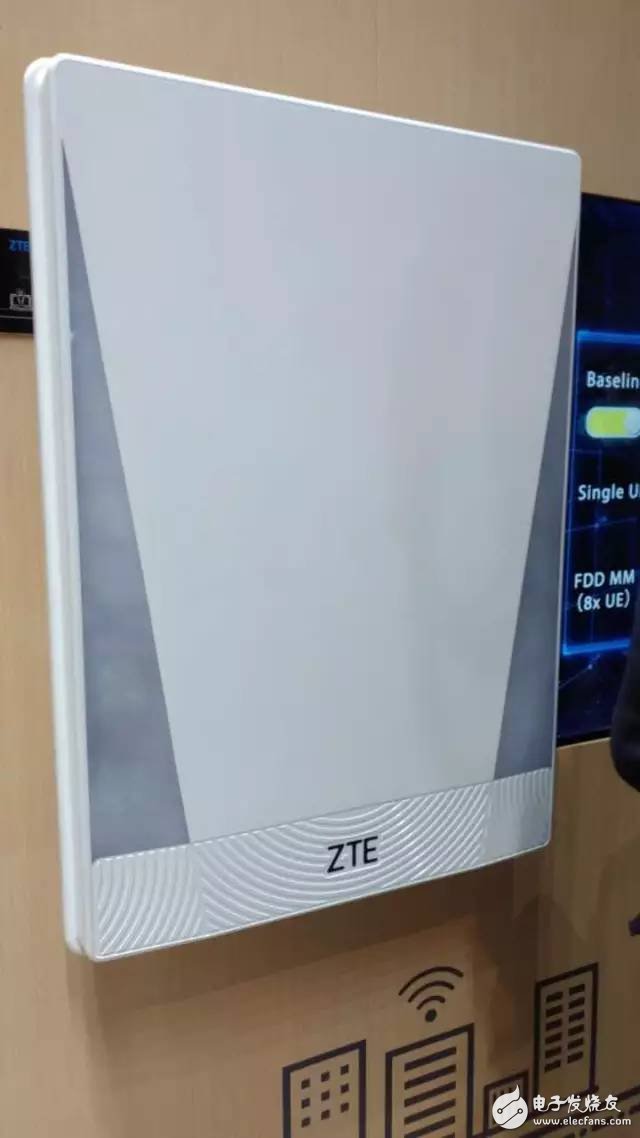At the World Mobile Conference held in Barcelona, ​​ZTE's Pre5G FDD Massive MIMO service demonstration uses 8 terminals for simultaneous access, achieving a single cell 2.6Gbps peak rate and a spectrum efficiency improvement of 8 times. I was amazed by the shock, a little unprepared, and quickly turned over the information supplementary class, so I wrote a long article in a hopeless technical house. Massive MIMO is a MU-MIMO that configures a large-scale antenna array far more than the existing system on the base station side to simultaneously serve multiple users, also known as Large Scale MIMO. Let's review the most basic wireless communication knowledge. Assuming that the distance between the base station and the mobile phone is R and the transmission power of the base station antenna is Ptx, what is the signal power Prx received by the mobile phone antenna? In free space, the signal strength decays inversely proportional to the square of the distance. The simplest formula is this. .. This formula tells us that the distance between the base station and the mobile phone is increased by a factor of two, and the received signal strength of the mobile phone is attenuated by four times. However, the signal strength received by the mobile phone is actually affected by the frequency (wavelength λ), the transmit antenna gain (Gtx), and the receive antenna gain (Grx). For example, the frequency, from 2G to 4G, to 5G, the frequency band used by mobile communication is getting higher and higher (the shorter the wavelength), and the signal coverage distance is shorter. Therefore, a more complete formula is like this. .. According to this formula, think about how to improve the received signal strength of mobile phones? the answer is: 1 increase the transmission power Ptx 2 shorten the distance between the mobile phone and the base station R 3 increase the wavelength (using the low frequency band) 4 increase the receiving antenna gain 5 increase the transmit antenna gain Which options would you choose? For 123, due to the limitations of objective conditions, it can only be a theoretically beautiful imagination. We can't increase the power indefinitely. Shortening the distance between the base station and the mobile phone means that the cost of building a station is low, and the resources in the low frequency band are limited. Only the antenna gain is increased! Maybe we can make a modified design for a single antenna, but trying to compensate for the signal attenuation caused by high frequency bands and distances is like a drop in the bucket. The only way is to increase the number of antennas! Imagine that a large number of antennas are simultaneously powered and multi-beam signals are superimposed, which not only increases the gain, but also reduces the single-antenna transmit power, thereby balancing energy consumption and cost, and is more robust against signal attenuation and can be reduced. Delay. For the 5G high frequency band with more attenuation, Massive MIMO is even more indispensable. To tell the truth, we worked hard on the physical layer to study the power of the boss and did not improve the gain of a few dB. It is better to increase the antenna directly, and the effect is immediate. Massive MIMO, great! After talking about large-scale antennas, you have to talk about MU-MIMO. Shannon's theorem point-to-point channel capacity is limited by the base station transmit power and signal-to-noise ratio. Looking at the above formula, for a point-to-point single user, if you want to increase the spectral efficiency from 4bit/s/Hz to 8bit/s/Hz, you have to increase the power by 17 times. We have been limited to Shannon's theorem until MIMO emerged. It jumps out of the point-to-point single-user box and transforms a single point-to-point channel into multiple parallel channels for processing, so that the spectral efficiency is mainly determined by the number of parallel channels, thereby improving system capacity and spectrum efficiency. MIMO refers to the use of multiple transmit and receive antennas at the transmit and receive ends, respectively, using spatial diversity to allow different signals to be transmitted simultaneously at the same frequency. MIMO technology has undergone a development process from SU-MIMO (single-user MIMO) to MU-MIMO (multi-user MIMO). As shown in the above figure, both (a) and (b) belong to SU-MIMO, which is characterized by serving only a single terminal, and the terminal is limited by the number of the world and the design complexity, thus limiting further development. MU-MIMO combines multiple terminals for spatial multiplexing, and antennas of multiple terminals are used simultaneously. Thus, a large number of base station antennas and terminal antennas form a large-scale virtual MIMO channel system. This is to think more about improving system capacity from the perspective of the entire network. However, with so many antennas introduced, signals crossing will inevitably lead to interference, which requires pre-processing and beamforming techniques. Beamforming means that a large-scale multi-antenna system can control the phase and signal amplitude of the transmitted (or received) signal of each antenna element, produce a directional beam, eliminate interference from all directions, and enhance the beam direction signal. It compensates for wireless propagation losses. As for 3D Beamforming, it refers to a separate beam that forms a transmission signal in three-dimensional space (horizontal and vertical space). As for preprocessing, since the system is in the "central base station-distributed terminal" mode under Massive MIMO, signal transmission occurs between the base station and each user, and each user cannot communicate with each other, and the channel condition of a single user to other users and The information is not known, so the base station needs to collect the CSI (Channel States InformaTIon) of all users for precoding and scheduling, and effectively separate the user signals to counter the interference between users. It should be noted that the beamforming of Massive MIMO is different from the beamforming we usually understand. It is not a beam line pointing to the user terminal, but can be directed to the terminal from a number of different directions. The signal pre-processing algorithm can optimally route the beam, and it can also send data streams to the specified user via the obstacle reflection path with precise coordination. Here is a classic demo. Assume that there is an omnidirectional base station (red dot) on the side of a densely populated square, with three terminals (red, green, and blue X) distributed in different directions. In the case of no Massive MIMO, when the red terminal communicates with the base station, the wireless propagation path is like this. .. With the Massive MIMO scene and the introduction of precise beamforming, the situation magically becomes like this. .. Massive MIMO improves energy efficiency and improves spectrum efficiency, so it's easy to understand! However, the problem is coming! It is not an easy task for the base station to accurately grasp the channel information and the terminal position, like the martial arts masters. Under Massive MIMO, the base station sends pilots to the terminal and feeds the CSI back to the base station. We encounter two thorny problems: (1) The downlink pilots between the antennas need to be orthogonal to each other, which means that the more antennas, the more time-frequency resources are occupied by the downlink pilots. (2) The terminal feeds back to the base station and also consumes uplink time-frequency resources, and as the number of antennas increases in proportion, it may be hundreds of times that of the conventional system. Since the TDD system uses the same frequency band in the uplink and downlink, the downlink channel can be estimated unilaterally based on the uplink channel condition, that is, the reciprocity of the uplink and downlink channels is utilized to infer the downlink of the base station to the terminal. For the FDD system, a large amount of CSI feedback is generated. As the number of antennas increases, not only the overhead increases, but also the accuracy and timeliness of the feedback information may be reduced. Therefore, the industry has always thought that Massive MIMO is more difficult to deploy on FDD. For this reason, the news from Barcelona today is gratifying. How is ZTE realized? I think nothing more than a martial arts master who wants to practice a peerless martial art. It is essential to retreat and practice hard. There is absolutely no accident in Jin Yong's novels in real life. In 2015, ZTE completed product development and field testing based on TDD-based Pre5G Massive MIMO, and many operators began commercial testing and deployment. TDD Massive MIMO 1.0 In February 2016, at the MWC 2016 Mobile World Congress in Barcelona, ​​the product won the "Best Mobile Technology Breakthrough" and "Cross's Choice 2016" (Outstanding overall Mobile Technology-The CTO's Choice 2016) Double prize, this is the highest honor recognized by the industry. TDD Massive MIMO 2.0 Subsequently, operators in populous countries such as China, Japan, and Indonesia conducted commercial deployments on a large scale. We discovered ZTE's TDD-based Pre5G Massive MIMO base station on the streets. Based on the large amount of propagation characteristic data accumulated by the commercial scale of TDD Massive MIMO technology, ZTE R&D team creatively proposed the patented algorithm of Massive MIMO channel measurement and estimation in FDD system, realizing the macro symmetry of FDD, without the need for more cooperation of mobile phones. The spectrum efficiency has been greatly improved. At the same time, ZTE's self-developed vector processing chip MCS2.0 provides powerful signal processing and processing capabilities, which provides a possibility for FDD Massive MIMO complex algorithm implementation. Retreat and practice, and finally become a positive result. On December 30, 2016, ZTE released the world's first Massive MIMO solution based on FDD LTE system, and cooperated with China Unicom to complete pre-commercial verification of the field. FDD Massive MIMO 2.0 Today, just two months later, we saw ZTE’s technological breakthrough in FDD Massive MIMO. Undoubtedly, as the label technology of ZTE Pre5G, Massive MIMO introduces the FDD system, which solves the problem of improving the spectrum efficiency for the most widely deployed FDD-LTE network in the world, and further expands the commercial space of Pre5G. It is said that ZTE Pre5G has been deployed in more than 40 networks in 30 countries around the world. Another new era has opened, and the speed of mobile communication is amazing!
10-inch tablet devices have greatly surpassed netbooks in terms of entertainment, including reading, games, and audio-visual enjoyment. In other respects, the basic operation of the 10-inch tablet computer built on the touch screen ensures that the application of the tablet computer can be well realized, and its operation performance is closer to that of a smartphone.
1.In appearance, the 10-inches tablet computer looks like a large-screen mobile phone, or more like a separate LCD screen.
2.In terms of hardware configuration, the 10-inches tablet computer has all the hardware devices of a traditional computer, and has its own unique operating system, compatible with a variety of applications, and has a complete set of computer functions.
3.The 10-inches tablet computer is a miniaturized computer. Compared with traditional desktop computers, tablet computers are mobile and flexible. Compared with Laptops, tablets are smaller and more portable
4.The 10-inches tablet is a digital notebook with digital ink function. In daily use, you can use the tablet computer like an ordinary notebook, take notes anytime and anywhere, and leave your own notes in electronic texts and documents.
10 Inches Tablet Pc,Tablet Pc Android,10 Inch Quad Core Tablet,Tablet 10 Inch Jingjiang Gisen Technology Co.,Ltd , https://www.jsgisentec.com

